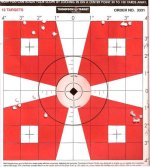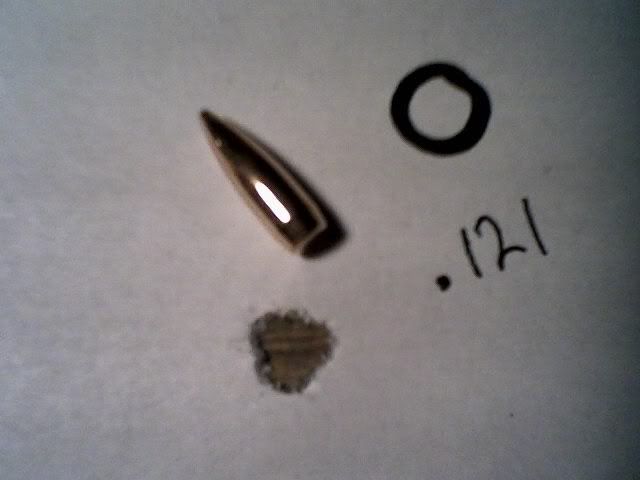M
Montana Pete
Guest
Today's trip to the rifle range involved an interesting test. The rifle involved is a Savage Model 12 in 22-250.
I tried to test two nearly identical bullets-- the 52 gr. HPBT-Match by, respectively, Hornady and Sierra.
Everything else was identical. I used a box of 20 W-W cases that had been fired an identical number of times, and always processed throughout in an identical way. Ten of these cases were loaded with the Hornady, the other ten with the Sierra.
Same primers, same type of powder, same charge weight, same bullet seating depth . . . same everything.
Five shots were fired with the Hornady, then five with the Sierra --- then five more Hornady, then the final five Sierra. This "staggering" eliminates any skewing of the results due to variation in barrel temperature -- sometimes a hot barrel will throw bullets a bit differently than a cool one.
Before running the test, I fired five shots of some left-over ammo I happened to have -- solely for the purpose of fouling the cleaned barrel and to warm the barrel up slightly. This eliminated some variables.
The target is attached. All shooting was at 100 yds. The two groups of holes on the left -- top and bottom -- are the Hornady, and the two on the right -- top and bottom -- are the Sierra. Best group was the lower right Sierra at 5/8 inch. The upper right Sierra, four shots in about 3/8 inch.
It is pretty apparent that the Sierra did quite a bit better. I cannot explain the one shot to the left in the upper right-hand group. It could have been human error on my part, although I would not have called the shot there. Who knows? The remaining shots in that group almost look like three shots, but were actually four.
All things considered, it seems pretty clear that the Sierras did much better than the Hornadys.
All this means is that THIS rifle loaded a certain way seemed to like the Sierras on a certain day. Different powder, different load, different rifle -- who knows? However, when I need to reorder bullets, I know which brand I will order.
Any comments or suggestions welcome.
I tried to test two nearly identical bullets-- the 52 gr. HPBT-Match by, respectively, Hornady and Sierra.
Everything else was identical. I used a box of 20 W-W cases that had been fired an identical number of times, and always processed throughout in an identical way. Ten of these cases were loaded with the Hornady, the other ten with the Sierra.
Same primers, same type of powder, same charge weight, same bullet seating depth . . . same everything.
Five shots were fired with the Hornady, then five with the Sierra --- then five more Hornady, then the final five Sierra. This "staggering" eliminates any skewing of the results due to variation in barrel temperature -- sometimes a hot barrel will throw bullets a bit differently than a cool one.
Before running the test, I fired five shots of some left-over ammo I happened to have -- solely for the purpose of fouling the cleaned barrel and to warm the barrel up slightly. This eliminated some variables.
The target is attached. All shooting was at 100 yds. The two groups of holes on the left -- top and bottom -- are the Hornady, and the two on the right -- top and bottom -- are the Sierra. Best group was the lower right Sierra at 5/8 inch. The upper right Sierra, four shots in about 3/8 inch.
It is pretty apparent that the Sierra did quite a bit better. I cannot explain the one shot to the left in the upper right-hand group. It could have been human error on my part, although I would not have called the shot there. Who knows? The remaining shots in that group almost look like three shots, but were actually four.
All things considered, it seems pretty clear that the Sierras did much better than the Hornadys.
All this means is that THIS rifle loaded a certain way seemed to like the Sierras on a certain day. Different powder, different load, different rifle -- who knows? However, when I need to reorder bullets, I know which brand I will order.
Any comments or suggestions welcome.
Attachments
Last edited by a moderator:



